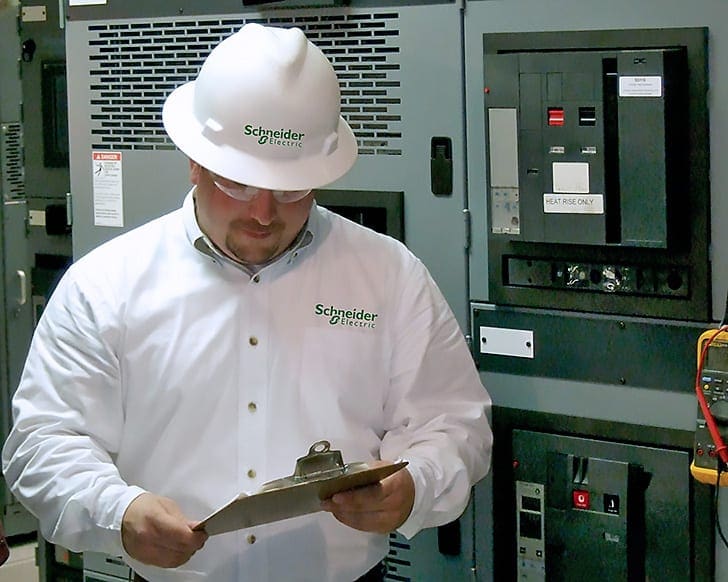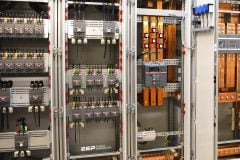Commissioning process for LV switchgear
Purchasing low voltage switchgear is not that easy, it’s not like purchasing a new TV or laptop. You have to be very experienced and deadly serious when specifying and ordering LV switchgear, but also during the commissioning and testing. This article is the guidance on the items that should be inspected, checked, and tested during the commissioning of an LV switchgear and associated circuit breakers.

The commissioning process for low voltage switchgear and circuit breakers involves evaluations, verifications, and checks that determine whether the proper switchgear and circuit breaker specifications and installation requirements are met.
Tests are also performed that determines whether the electric power distribution system will operate properly and safely after installation.
When the low voltage switchgear and circuit breakers are inspected and tested satisfactorily during the commissioning process, the system should operate in accordance with the manufacturer’s specifications for its maximum useful life.
- Evaluating LV switchgear and CBs upon receipt
- Evaluating LV switchgear and CBs installation and testing
1. Evaluating LV switchgear and CBs upon receipt
The installation of low voltage switchgear and circuit breakers is a process that occurs over a period of time. The installation begins with an identified need for a new low voltage power distribution installation (e.g., a new facility). Power is necessary for the new facility to function, so a switchgear and circuit breaker installation is designed. After the design is approved, the switchgear and circuit breakers are ordered.
Once the switchgear and circuit breakers are received from the manufacturer, they must be evaluated to ensure that they are proper for installation.
This section will describe how low voltage switchgear and circuit breakers are evaluated upon receipt.
- Visual Inspection
- Verification Against Specifications
1.1 Visual Inspection
When low voltage switchgear and circuit breakers are received from the manufacturer, a visual inspection should be performed. The purpose of the visual inspection is to verify that the switchgear and circuit breakers that were received from the manufacturer are in good physical condition and that all of the requested parts and accessories are present.
Because of the damage that can occur to the moving parts that are associated with low voltage switchgear and circuit breakers during installation, only a cursory inspection is performed at the receiving point.
A detailed inspection of the low voltage switchgear and circuit breakers is performed when they are completely installed at the site or facility.


1.2 Verification Against Specifications
When a new facility or facility modification is at the equipment installation stage, the design of the installation has already been completed. The type of low voltage switchgear and circuit breakers that are selected for a specific power system should be shown in the drawings, prints, or specifications for the installation.
The purpose of verifying low voltage switchgear and circuit breakers against the specifications is to ensure that the equipment that is is being installed meets industry standards.
Generally, the verification against specifications consists of a determination of whether the type and rating of the equipment that is to be installed match the size and type of the equipment that is required for the installation. Usually, this determination is accomplished by reading an electrical plan that identifies the low voltage switchgear and circuit breaker sizes and types.
In some situations, the Electrical Engineer must rely on his knowledge of the correct application of switchgear and circuit breakers sizes and types to determine whether the correct equipment is being used. The data sheets that were used to order the switchgear from the manufacturer should also be consulted.
Take a look at the example of the LV switchgear datasheet:
Premium Membership Required
This technical article/guide requires a Premium Membership. You can choose an annually based Plus, Pro, or Enterprise membership plan. Subscribe and enjoy studying specialized technical articles, online video courses, electrical engineering guides, and papers. With EEP’s premium membership, you get additional essence that enhances your knowledge and experience in low- medium- and high-voltage engineering fields.
Check out each plan’s benefits and choose the membership plan that works best for you or your organization.










